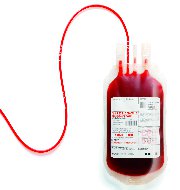Q+A: India’s Ban on Blood Donations by Gay and Transgender People
In India, gay and transgender individuals face discrimination in many forms. One such discrimination is the ban on them donating blood. After a petition was filed to challenge this ban, the Indian government defended the exclusion by citing scientific evidence that categorized the transgender and gay community in the “at-risk” group for HIV, Hepatitis B, and C infections.
Why are the rules prohibiting blood donations by transgender and gay community criticised?
The ban on gay and transgender people donating blood was introduced in the 1980s when information on detecting and transmitting HIV/AIDS was less advanced. At that time, people were not fully aware of the modes of transmission of the virus, and there was no reliable test to detect HIV in blood donations. The fear of HIV transmission led to the exclusion of gay and transgender people from donating blood in many countries, including India.
The Indian government justifies the ban on scientific grounds, stating that the community is at a higher risk of HIV, Hepatitis B, and C infections. However, activists argue that the ban is discriminatory and violates the fundamental right to equality. They argue that the government’s stand is based on outdated stereotypes and is not in line with the current medical knowledge of HIV transmission and prevention.
What is the current policy in India?
In India, the fitness of blood donors is determined by medical officers who must ensure that they are free from diseases that are transmissible by blood transfusion and not at risk of HIV, Hepatitis B, or C infections. The medical officers screen potential donors for their medical history, sexual behavior, and other risk factors before accepting them as donors. However, they exclude gay and transgender people from donating blood, regardless of their individual risk factors.
Activists have been challenging this ban for years, arguing that it is discriminatory and based on outdated notions of HIV transmission. In 2018, the Indian government told the Delhi High Court that it was considering lifting the ban, but no concrete action has been taken since then. In 2020, the National Blood Transfusion Council (NBTC) set up a committee to review the policy on blood donation by transgender individuals. However, the committee’s report is still awaited.
Do other countries allow blood donations by gay and transgender people?
While many countries still have restrictions on blood donation by gay and transgender individuals, some have proposed guidelines for easing these restrictions. For instance, the United States lifted its lifetime ban on blood donation by gay and bisexual men in 2015 and replaced it with a one-year deferral period for men who have had sex with other men. Similarly, the United Kingdom has a three-month deferral period for gay and bisexual men.
However, these guidelines have been criticized by activists for being discriminatory and based on stereotypes. They argue that the deferral periods are not based on individual risk factors but on sexual orientation, which is not a reliable indicator of HIV transmission.
Month: Current Affairs - March, 2023
Category: India Nation & States Current Affairs • Legal & Constitution Current Affairs


